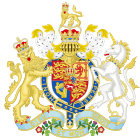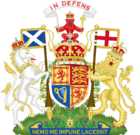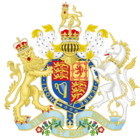Crown Estate Scotland facts for kids
 |
|
| Public corporation overview | |
|---|---|
| Formed | 1 April 2017 |
| Preceding Public corporation | |
| Jurisdiction | Scotland |
| Headquarters | Quartermile Two, 2, Lister Square, Edinburgh, EH3 9GL |
| Minister responsible |
|
| Public corporation executive |
|
Crown Estate Scotland (in Scottish Gaelic, Oighreachd a' Chrùin Alba) is a special company owned by the Scottish Government. Its job is to manage land and property in Scotland that belongs to the King or Queen. Even though the monarch legally owns these properties, they are not their private belongings and cannot be sold by them.
This organization was created in 2017. It took over from the main Crown Estate of the United Kingdom. Crown Estate Scotland looks after many different types of land and property. This includes rural areas, coastlines, city properties, and parts of the sea around Scotland.
The main goal of Crown Estate Scotland is to invest in these properties and natural resources. They want to create lasting value for the people of Scotland. Any money they earn, after paying for maintenance and improvements, goes to the Scottish Consolidated Fund. This fund helps pay for the Scottish Government's activities.
Crown Estate Scotland gets most of its money from renting out its properties. These properties are used for things like offshore renewable energy, farming, tourism, and fish farming. It is one of the biggest property managers in Scotland. In 2022, the properties it managed were worth over £568 million.
The land it manages includes more than 35,565 hectares (about 87,880 acres) in rural Scotland. Much of this land is rented out for farming, homes, businesses, and sports. Crown Estate Scotland also owns a lot of coastal and marine areas. This includes almost all of the seabed up to 12 nautical miles (22 kilometers) from the coast. They also have rights to rent out seabed for wind farms and gas storage further out to sea. They manage nearly half of Scotland's foreshore (the part of the coast between high and low tide).
Crown Estate Scotland works with the Scottish Government, the Scottish Parliament, local councils, and communities. Their aim is to make sure Scotland's assets benefit everyone.
Contents
History of Crown Estate Scotland
| Crown Lands (Scotland) Act 1832 | |
|---|---|
| Act of Parliament | |

|
|
| Long title | An Act to authorize the Hereditary Land Revenues of the Crown in Scotland being placed under the Management of the Commissioners of the Land Revenues. |
| Citation | 2 & 3 Will. 4. c. 112 |
| Dates | |
| Royal assent | 15 August 1832 |
| Other legislation | |
| Repealed by | Crown Estate Act 1961 |
|
Status: Repealed
|
|
| Crown Lands (Scotland) Act 1833 | |
|---|---|
| Act of Parliament | |

|
|
| Long title | An Act to provide for the Payment of certain ancient Grants and Allowances formerly paid out of the Civil List Revenues. |
| Citation | 3 & 4 Will. 4. c. 86 |
| Dates | |
| Royal assent | 28 August 1833 |
| Crown Lands (Scotland) Act 1835 | |
|---|---|
| Act of Parliament | |

|
|
| Long title | An Act to amend the Acts relating to the Hereditary Land Revenues of the Crown in Scotland. |
| Citation | 5 & 6 Will. 4. c. 58 |
| Dates | |
| Royal assent | 9 September 1835 |
The land and rights that Crown Estate Scotland now manages have a very long history. They come from old rights and properties that belonged to the Scottish Kings and Queens. Later, these became part of what the British monarch owned in Scotland.
In 1790, King George III gave up his claim to the income from Crown lands in England. In return, he received a yearly payment from the government. However, the income from Scottish Crown lands continued to go to the monarch until 1830.
At that time, under King William IV, the management of these Scottish lands changed. They were put under the care of a group called the Commissioners of Woods, Forests, Land Revenues, Works and Buildings. This change happened because of laws like the Crown Lands (Scotland) Act 1832, the Crown Lands (Scotland) Act 1833, and the Crown Lands (Scotland) Act 1835.
These lands mostly included former church lands in Caithness and Orkney. They also included old royal properties in Stirling and Edinburgh, and feudal payments. There were hardly any city properties. Most of the current Scottish Crown Estate, apart from foreshore and salmon fishing rights, was bought later. This includes the Glenlivet Estate, which is the largest area of land managed by the Crown Estate in Scotland. It was bought in 1937.
Transfer of Powers to Scotland
After the 2011 Scottish election, the Scottish National Party (SNP) wanted the income from the Crown Estate in Scotland to be managed by Scotland. This idea is called devolution, which means transferring powers from the UK Parliament to the Scottish Parliament.
At first, the UK government decided not to split up the Crown Estates. Instead, they planned to give some of the income to the Big Lottery Fund. This fund would then give money to communities along the coast.
However, after the 2014 Scottish independence referendum, there were more calls for Scotland to have more powers. The Smith Commission was set up to look into this. In November 2014, the commission suggested that the management of the Crown Estate's assets in Scotland, including the seabed and fishing rights, should be transferred to the Scottish Parliament.
| Crown Estate Scotland (Interim Management) Order 2017 | |
|---|---|
| Statutory Instrument | |

|
|
| Citation | SSI 2017/36 |
| Dates | |
| Made | 15 February 2017 |
| Commencement | 16 February 2017 |
| Other legislation | |
| Made under | Scotland Act 2016 |
| Text of statute as originally enacted | |
| Crown Estate Transfer Scheme 2017 | |
|---|---|
| Statutory Instrument | |

|
|
| Citation | SI 2017/524 |
| Territorial extent |
|
| Dates | |
| Made | 31 March 2017 |
| Commencement | 1 April 2017 |
| Other legislation | |
| Made under | Scotland Act 1998 |
| Text of statute as originally enacted | |
A new law, the Scotland Act 2016, was passed in March 2016. This law allowed the management and income of Crown Estate assets in Scotland to be transferred. Crown Estate Scotland was officially set up by the Crown Estate Scotland (Interim Management) Order 2017.
On April 1, 2017, the existing duties of the Crown Estate Commissioners were transferred to Crown Estate Scotland. This happened under the Crown Estate Transfer Scheme 2017. Before this transfer, the Crown Estate owned a large share in the Fort Kinnaird shopping park. This was a big part of the Crown's assets in Scotland. However, this share was not given to Crown Estate Scotland. Two years later, the Crown Estate sold its share and used the money to fully own another retail park in Cheltenham, England.
The main law that guides Crown Estate Scotland is the Scottish Crown Estate Act 2019, which was passed in 2019.
ScotWind Auction
In January 2022, Crown Estate Scotland announced the results of the "ScotWind" auction. This was a process where companies could bid for rights to build offshore wind farms in 17 areas of the seabed. These areas cover about 7,000 square kilometers.
The auction raised almost £700 million for the Scottish Government. The sites are expected to be able to produce over 24 gigawatts of electricity in total. By April 2022, all 17 winning companies had signed their agreements. Crown Estate Scotland believes that these projects will lead to about £1.5 billion being spent on local industries for each project.
Assets Managed by Crown Estate Scotland
Crown Estate Scotland is in charge of managing many different types of assets:
- 35,565 hectares (about 87,880 acres) of rural land. This land has farms, homes, businesses, and forests on four large estates: Glenlivet, Fochabers, Applegirth, and Whitehill.
- Rights to fish for salmon and sea trout in many Scottish rivers.
- About half of the foreshore around Scotland. This includes 5,800 places where boats can be tied up, and some ports and harbors.
- Renting out almost all of the seabed up to 12 nautical miles (22 kilometers) from the coast. This includes about 750 fish farming sites and agreements with companies that lay cables and pipelines.
- The rights to develop offshore renewable energy (like wind farms) and store gas or carbon dioxide up to 200 nautical miles (370 kilometers) from the coast.
- Rights to naturally occurring gold and silver across most of Scotland.
- Shops and offices at 39-41 George Street in Edinburgh, plus other business properties.
There are some special cases for things found in Scottish waters. For example, the King or Queen has the first claim on "royal fish" (whales longer than 25 feet or 7.6 meters) found dead or stranded. However, since 1999, the Scottish Government's Marine Directorate handles this right. So, royal fish do not become the property of Crown Estate Scotland. Also, if something is found that has no owner (called bona vacantia), it goes back to the Crown. In Scotland, these items are managed by the King's and Lord Treasurer's Remembrancer.
Management and Governance
Crown Estate Scotland is a self-financing public company of the Scottish Government. This means it is a business run by the government. The Scottish Ministers are ultimately responsible for Crown Estate Scotland and the Scottish Crown Estate.
The organization is overseen by a board of members who are not involved in the day-to-day running. These board members and their leader are chosen by the Scottish Ministers. Board members usually serve for two or three years and cannot serve for more than eight years in total.
The board chooses a Chief Executive. This person is in charge of running the organization every day. The Chief Executive reports to both the Scottish Parliament and the Board. As of September 2022, the Chief Executive was Ronan O'Hara.
See also

